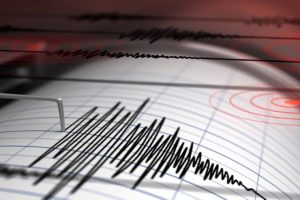A mild earthquake of magnitude 3.7 struck Pakistan in the early hours of Wednesday, the National Center for Seismology (NCS) reported.
The tremor occurred at 2:38 AM (IST) at a depth of 170 kilometres, with coordinates 29.86°N latitude and 71.09°E longitude.
This comes just a day after a stronger earthquake measuring 5.2 jolted Islamabad, Rawalpindi, and several parts of Khyber Pakhtunkhwa (KP), according to the Pakistan Meteorological Department’s (PMD) Seismic Network.
The Tuesday quake, recorded at 10:20 AM (local time), had its epicentre in Afghanistan’s Hindu Kush region at a depth of 190 km. The tremors were felt across Islamabad, Rawalpindi, Peshawar, Swat, Chitral, Abbottabad, and multiple divisions in Punjab, including Lahore, Multan, Faisalabad, Sargodha, and Bahawalpur.
So far, no casualties or major damage have been reported. KP’s Rescue 1122 spokesperson Bilal Faizi confirmed that no emergency had been declared.
Pakistan, located at the intersection of the Arabian, Eurasian, and Indian tectonic plates, falls within five seismic zones, making it highly vulnerable to frequent earthquakes. The Hindu Kush region, one of the most active seismic belts globally, often witnesses deep-focus quakes due to the ongoing collision of tectonic plates.
According to the US Geological Survey, this seismic activity is linked to subduction processes and slab break-off beneath the Hindu Kush-Pamir region, part of the broader Himalayan seismic belt known for destructive earthquakes across Afghanistan, Pakistan, and northern India.





